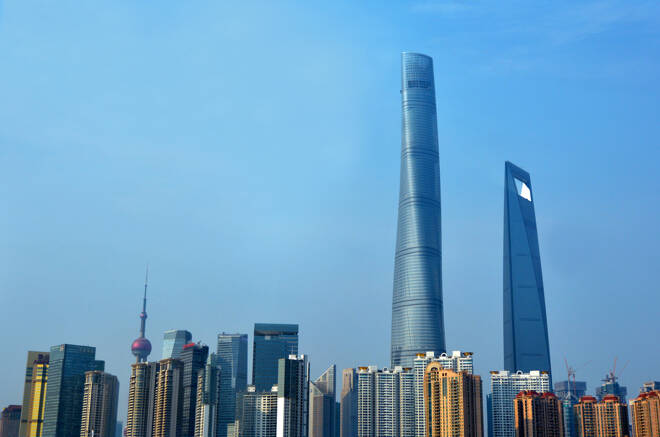Advertisement
Advertisement
A Coronavirus that Will Test China’s Ability to Comply with the Trade Agreement…
By:
We are seeing the markets balk and while the risk aversion is justified, the impact on monetary policy and geopolitics could be far greater.
The Apple Cart
Just a week ago the markets seemed almost certain of what lay ahead on the monetary policy front.
We saw the U.S equity markets hit fresh record highs. Even the EuroStoxx600 hit record highs at the start of the year.
The signing of the phase 1 trade agreement between the U.S and China raised the expectation of a marked pickup in global trade.
In the wake of the phase 1 agreement and as the Trump impeachment proceeded, concerns were that it would be the U.S President that would rock the apple cart.
Just last week, we saw a buildup in trade tensions between the EU and the U.S, as Trump threatened tariffs on EU autos.
The rise in tensions suggests that the EU may well be next to experience the material shift in U.S foreign policy.
For the EU, this is a worrying prospect. Britain is on its way out at the end of the week and a number of member states already have one foot in the exit door.
A punitive U.S – EU trade war that has the Establishment calling the shots could be the straw that broke the camel’s back.
Germany has frequently been accused of benefitting from ECB policy.
So, while the ECB stood pat and the FED sees a positive economic environment, the novel coronavirus could undo the work done in recent years.
Even the PBoC had left loan prime rates unchanged last week in a bid to demonstrate confidence in the economic outlook.
Unfortunately for China and the region, who had pinned hopes on the phase 1 agreement, the coronavirus spells trouble…
Can China stick to the agreement? That may well end up being the bigger question.
Most at Risk
Economies reliant upon Chinese tourism are certainly under the lens and then there is contagion risk…
It’s perhaps unsurprising that the coronavirus has found a global footprint. When considering the sheer number of Chinese tourists that travel across the globe, the dependence has become significant.
The Chinese government’s decision to ban tour groups, quarantine entire provinces and more will hurt. Some countries have left the door open in the hope that the damage would be limited. For those, the aftermath may prove to be more damaging. After all, if the Chinese government is willing to shut down the borders, how can governments within the region do the opposite in order to avoid economic disruption…?
Alongside tourism, we can expect economies that support consumption, including the supply chain, to also suffer. These would include commodity economies such as Australia and New Zealand.
There is plenty of uncertainty over how long this could stretch out for. The complexities of the virus and the lack of a cure suggest that governments could be grappling for a year or more…
We then consider the concept of protectionism that the U.S President, in particular, has been aggressive in delivering.
The shutdown of borders would lead to a complete cessation of trade. It’s not surprising that the WHO held back from announcing a global emergency, though it may just be an inevitability…
Central Banks
Just last week we saw the BoJ deliver a more optimistic outlook on growth and inflation. The ECB was a little dovish, but certainly not as bad has it could have been considering manufacturing sector woes.
Then we have the RBNZ who was expected to stand pat through the year.
If the RBA was under pressure ahead of the February meeting, how the spread of the virus progresses could prove to have a more material impact than the bushfires.
We can even look at the BoC and their dovish stance. The virus will likely force a move if consumption and trade volumes materially deteriorate.
And Finally
The Epicenter of the virus is in China and it is no longer contained. China is a major trading partner across the globe. This does not bode well.
This week’s sell-off across the global equity markets and jump in demand for the safe havens are justified. One does wonder why there was such a delayed reaction to the spread of the virus…
We will need to continue monitoring the spread, however. While the general area of focus is now on how the WHO classifies the virus, border controls must be the key driver.
There may be political pressure on the WHO to delay announcing a global emergency. After all, the spread of the virus comes at a time when the ink is barely dry on the phase 1 agreement…
For the less cynical, perhaps there is a hope that this is nothing more than a seasonal outbreak… The optimists will be looking at the mortality rate, hoping that there is no spike. At 3-4%, that sounds like a small number. When considering the sheer number of infected, however, that becomes less palatable…
Without wanting to be an alarmist, it certainly doesn’t feel like a seasonal outbreak and it may also give Beijing a get out from the phase 1 agreement that could last beyond November’s election…
About the Author
Bob Masonauthor
With over 28 years of experience in the financial industry, Bob has worked with various global rating agencies and multinational banks. Currently he is covering currencies, commodities, alternative asset classes and global equities, focusing mostly on European and Asian markets.
Advertisement
